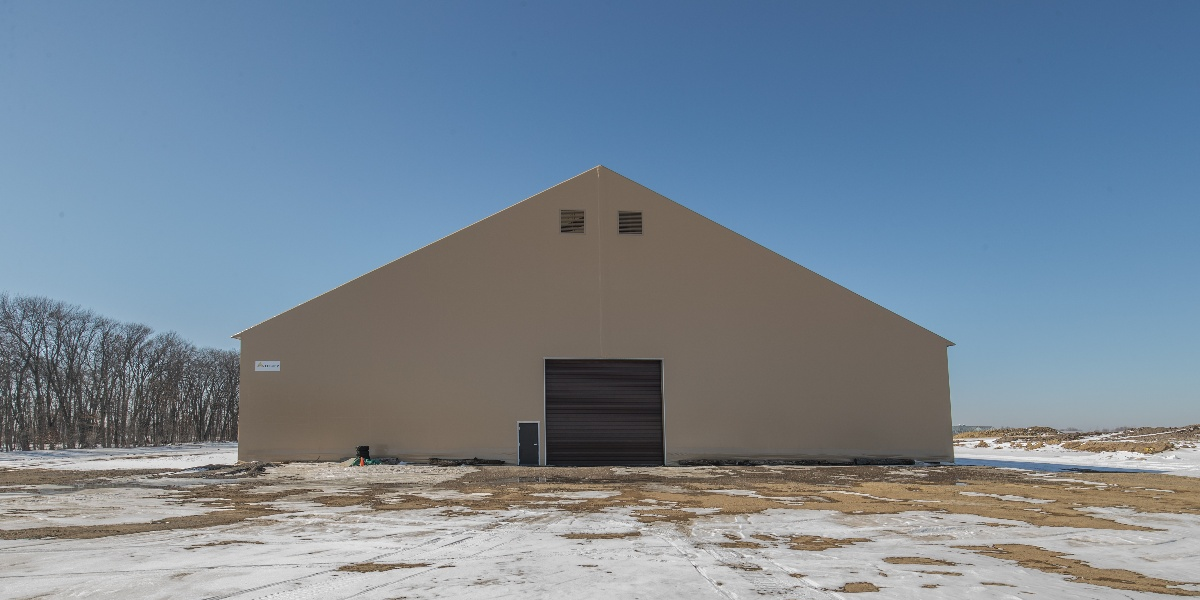Fabric Structures: Overcoming Environmental Loads

Fabric structures are erected in some of the world’s most remote areas, where harsh weather is a constant concern. Even areas with generally temperate climates are occasionally hit with storms and other extreme weather. Tension fabric structures have the strength and proven engineering to withstand the forces of extreme weather.
Fabric Structures in Wind Events
When heavy winds blow over the peak of a building, the winds cause suction on the leeward side of the roof. In monocover buildings, this outward pressure causes unsupported fabric to lift off the frame, placing additional stress on the fabric at the building end frames. This suction is one of the most common causes of fabric tearing and failure of monocover fabric structures.
Engineered structures use narrow roof panels individually attached to the framing members with a keder rail. These roofs are designed to withstand the forces of wind. Individual panels have smaller surface area and are attached along the length of the panel. This keeps the roof in place, even during sustained high winds.
Learn more about the engineering behind fabric structures with a panel attachment system.
In areas vulnerable to tornadoes and hurricanes, building owners should verify that their building meets the federal standards for those storms before construction.
Heavy Snows
Heavy snow sitting on the roof is a common health and safety concern. Engineered fabric structures combat this problem with a roof pitch designed to let snow slide off and proper roof tension. Properly installed fabric structures are designed to meet or exceed the building codes related to snow and snow-on-ice codes.
Protect people and materials at ground level with icebreakers along the roofline.
UV Rays
UV rays are a major source of damage to fabric. Unlike other environmental dangers, there is no way to engineer the building that mitigates the effect of UV rays. Exxotec™ PVC fabric has a topcoat and a clear lacquer that stops UV damage. Learn more about Exxotec™.
Quality Testing for Structural Fabric in Extreme Weather Conditions
Fabric manufacturers use weathering machines to test the effects of wind, snow and UV rays. These machines simulate the impact of years of weather damage. All fabric structure manufacturers should be able to produce the test results for their high-tech fabric.
Fabric structures have been erected for permanent and temporary uses on all continents and in all conditions. While there is no building material that is completely immune to the impact of extreme weather, fabric building owners can have confidence in the integrity and longevity of their building.
Legacy Building Solutions custom engineers each fabric structure to ensure it will stand up to applicable environmental factors. Request a quote to start designing your building today.
Subscribe to our Blog
Recent Posts
- 5 Factors Every Project Owner Should Consider Before Approving Building Materials
- The 20-Year View: How Material Choices Impact Long-Term Operational Costs
- Climate Resilience in Commercial Construction: Why Traditional Methods May Not Be Enough
- Speed and Quality: The Role of Hybrid Building Materials
- Beyond the Bleachers: Designing Visually Striking Sports Facilities
